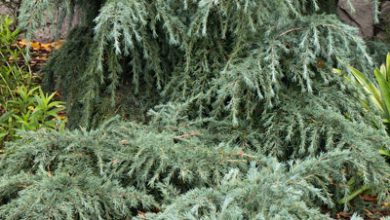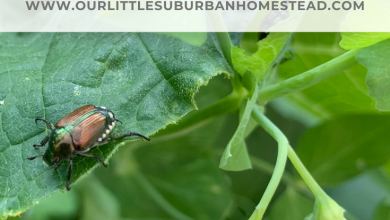Cucurbits Angular Spot: [Characteristics, Detection, Effects and Treatment]
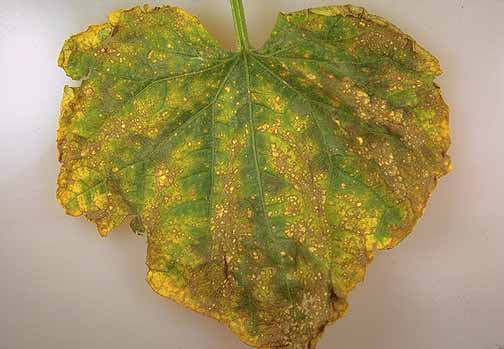
What is angular leaf spot of cucurbits?
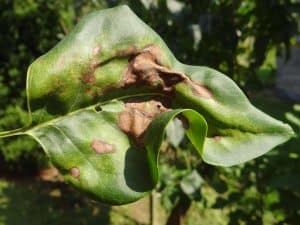 The angular spot of cucurbits is the most palpable manifestation of an infection of bacterial origin that generates important lesions in the leaves of vegetables and fruit trees such as melons, watermelons, cucumbers, zucchini, as well as other plants that are grown in warm climate with humidity elevated.
The angular spot of cucurbits is the most palpable manifestation of an infection of bacterial origin that generates important lesions in the leaves of vegetables and fruit trees such as melons, watermelons, cucumbers, zucchini, as well as other plants that are grown in warm climate with humidity elevated.
The bacterium responsible for this disease is Pseudomonas syringae, which manifests itself aggressively after abundant watering, in exacerbated humidity conditions, or after torrential rains.
The virtual encyclopedia Wikipedia describes Pseudomonas syringae as a plant pathogen with more than 50 different types of pathovars or strains of bacteria with the same and similar characteristics, which have individual differences at an infraspecific level from other races of the same species or subspecies.
How can we identify it?
The bacterial infection produced by Pseudomonas syringae, which generates the following symptoms, after settling in its victim. Let’s see.
- The leaves turn gray to brown after being wet with irrigation or rainwater.
- The first lesions can spread to stems, petioles and fruits, they do not remain only on the leaves.
- The lesions are initially water-soaked, rounded and irregular, with the presence and absence of a chlorotic halo, but as they increase in size, angular brown spots are produced, thanks to the limitation produced by the veins of the leaves to obvious bacterial growth.
- The wound, when the leaf dries, causes an angular hole because the tissue is destroyed.
- The plant takes on a ragged, dilapidated appearance.
- If the plant has fruits, the wounds will also be visible in the same way, causing holes in the surface. But they are always smaller, whitish and round or circular, than those that appear on the leaves.
- In conditions of extreme humidity, the fruits will register an initial exudation process that later gives way to the appearance of whitish crusts.
- The wounds in the fruit facilitate the insertion of other pathogenic agents, until rotting occurs. Initial deformations also occur.
What plants are affected by angular leaf spot of cucurbits?
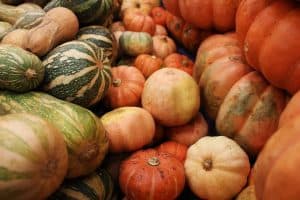 It can attack any cucurbit, but it especially loves to damage squash, cucumber, melon, watermelon, and squash plants.
It can attack any cucurbit, but it especially loves to damage squash, cucumber, melon, watermelon, and squash plants.
This bacterium has a great capacity to survive among crop residues and in seeds, where it becomes tremendously strong.
When a seed is infected by this pathogen, what happens is that when the disease germinates, it will spread everywhere in the ground, because it is capable of penetrating the cotyledons. Rain, abundant irrigation, agricultural machinery and even insects are unintentional contributors to its spread.
The bacteria, consequently, will act freely and penetrate plant tissues through natural openings such as stomata and hydathodes and will also take advantage of sneaking through a wound.It thrives in environments loaded with high humidity and high concentrations of nitrogen. That’s why he loves winter.
But also in warm temperatures, ranging between 23 -28ºC (75 and 82ºF).
How to combat the angular spot of cucurbits?
Some simple preventive measures are the best antidote against this devastating bacteria, which can ruin crops in a short period of time and cause great economic losses.The minor damage it causes is poor production, where crops will not yield large harvests.
The seeds
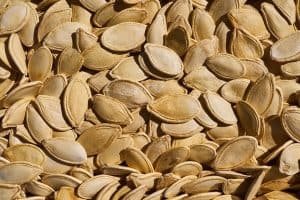 The first thing to be clear about is that the seeds must be purchased from trusted stores, but must be certified so that there are full guarantees of disinfection.
The first thing to be clear about is that the seeds must be purchased from trusted stores, but must be certified so that there are full guarantees of disinfection.
In case the seeds have not been previously tested, it is then necessary to carry out a previous disinfection treatment with the help of hot water, although the germination process could be affected if it is not carried out with the help of experts.
It is not appropriate to water the seedlings in excess, especially if they are grown in a greenhouse. The top should always be dry, as much as possible. And if watery stains are seen, it is convenient to take a sample of it and take it to a laboratory to rule out pathogens.
And if the suspicions are confirmed and there is some bacteria, then the seedbed or tray that contains the infection must be eliminated.Some copper-based fungicide should be applied to the rest of the seedlings as a protection measure.
Highly tolerant crops
Another option is that the selected crops are tolerant to these pathogens. The help of experts in the field is very important when choosing what we can harvest without major associated risks.
Do not fertilize with nitrogen
Another highly effective measure is to avoid irrigation with nitrogen fertilization. They promote the appearance of the pathogen.And it is prudent to do crop rotations, where around 3 years the planting of new cucurbits is avoided.
A soil with a pH located in a range of 6.0-7.0, together with the reduction in nitrogen, will end with the wilting of crops, especially in the case of melon, which suffers a lot from the action of wilting caused by Fusarium, although the best practice is to acquire resistant varieties.
drip irrigation
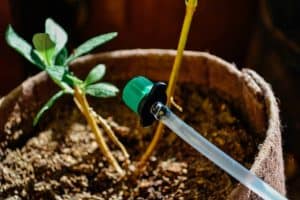 Sprinkler irrigation is not recommended, since it is impossible to control the high humidity in the leaves. It is preferable to use a drip irrigation system, absolutely controllable.
Sprinkler irrigation is not recommended, since it is impossible to control the high humidity in the leaves. It is preferable to use a drip irrigation system, absolutely controllable.
Avoiding excessive watering is a mandatory measure, because soggy leaves will not be healthy.
Insecticide application
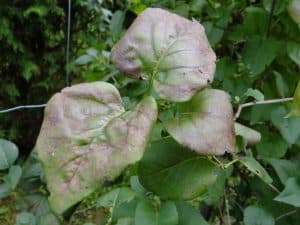 The most advisable thing is to use an application of insecticides at the foliar level, and also to the seeds and the soil before proceeding to plant.
The most advisable thing is to use an application of insecticides at the foliar level, and also to the seeds and the soil before proceeding to plant.
Another convenient measure is the application of insecticides to plant wounds, as this practice will also help prevent the proliferation of bacteria and other deadly agents for plant health.
A good measure is to apply prevention treatment with copper -based compounds, they are another very viable option at a protective level.And very important: as soon as nurse leaves begin to be observed, it is necessary to remove them immediately, in order to avoid a spread that may be unstoppable.
What are the best products to remove angular leaf spot from cucurbits?
The application of treatments based on copper oxochloride, Mancozed, Zineb and Maneb are extremely effective, following the express indications of the instructions produced by the manufacturer.

![Photo of Sowing African Violet: [Needs, Substrate, Irrigation and Cultivation]](https://www.complete-gardening.com/wp-content/uploads/2022/08/sowing-african-violet-needs-substrate-irrigation-and-cultivation-390x220.jpg)
